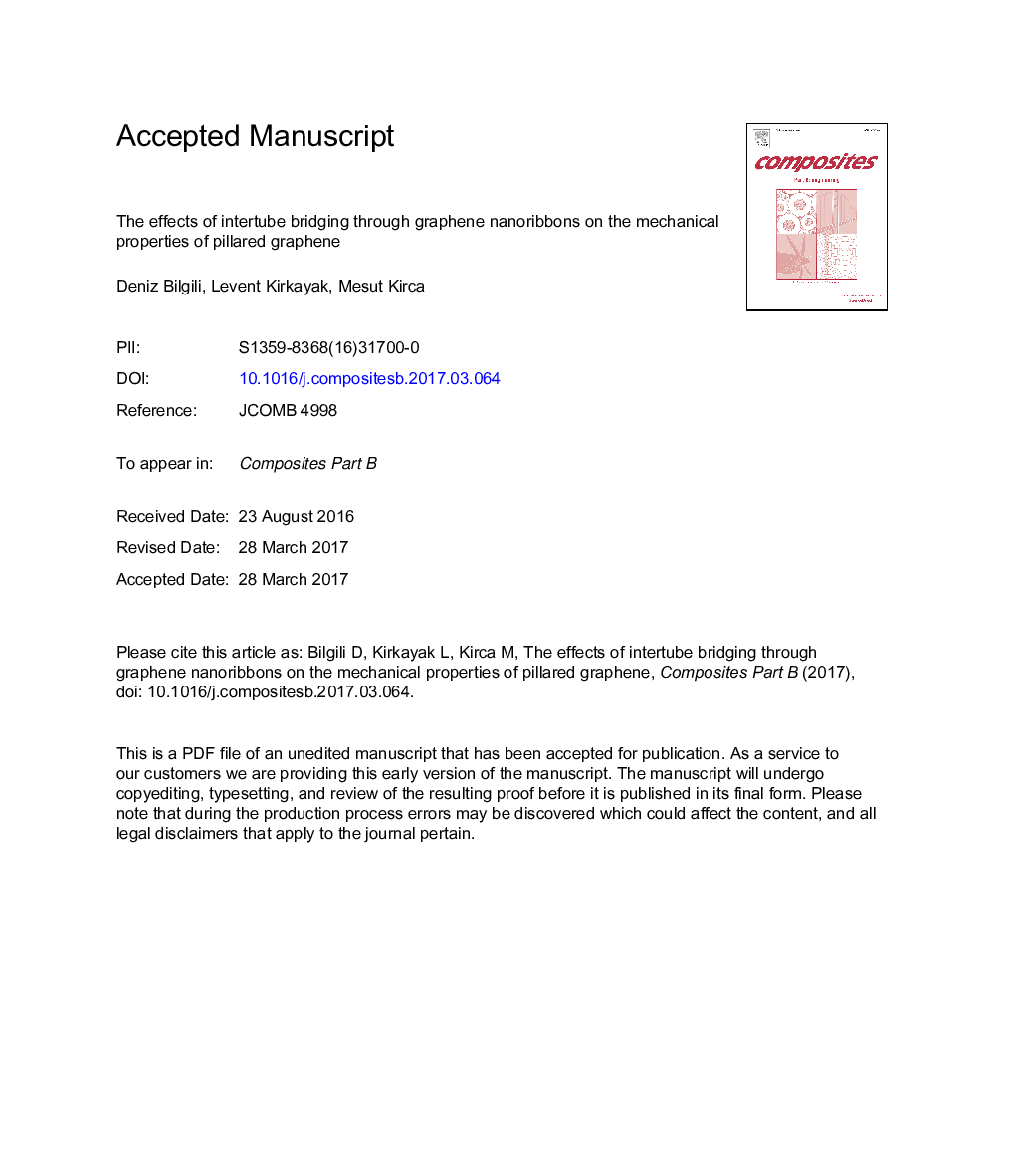| Article ID | Journal | Published Year | Pages | File Type |
|---|---|---|---|---|
| 5021276 | Composites Part B: Engineering | 2017 | 27 Pages |
Abstract
In this study, effects of intertube bridging and bridging type on the mechanical properties of pillared graphene are investigated through molecular dynamics (MD) simulations. For this purpose, atomistic models of pillared graphene structures consisting of six carbon nanotubes (CNTs), which are arranged in a regular hexagonal pattern, are built by employing graphene nanoribbons as intertube bridging units. In the first phase, tensile behaviors of two pillared graphene structures (i.e. with and without intertube bridging) are compared to understand the effects of intertube bridging. In the second phase, two different models for the interconnected pillared graphene are prepared by using graphene nanoribbons with different lengths. Numerical tensile tests with the same settings are conducted on the specimens of the proposed nanostructures, and their mechanical properties including tensile strength and toughness are examined. Based on the results, it is shown that intertube bridging between CNT units significantly increases the tensile strength of pillared graphene. Furthermore, it is also demonstrated that, depending on the length of the interconnecting graphene nanoribbons, intertube bridging can either increase or decrease the toughness of pillared graphene nanostructures, thereby providing tunable hybrid mechanical characteristics.
Related Topics
Physical Sciences and Engineering
Engineering
Engineering (General)
Authors
Deniz Bilgili, Levent Kirkayak, Mesut Kirca,
